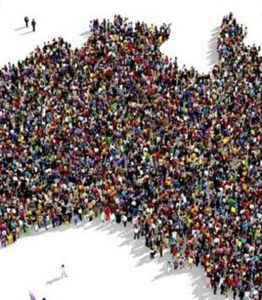Population growth stalls as migrants and tourists disappear
Australia’s population growth is stalling as migrants leave the country and closed international borders keep new arrivals of all kinds out, new data shows.
As economists warn Australia’s economy could come out of COVID-19 pandemic and contract yet again as the Commonwealth Government cuts stimulus measures in September, new data shows the nation headed for the biggest slowdown in population growth in 80 years.
 The Australian Bureau of Statistics (ABS) reported that through March, April and May temporary and permanent non-tourist departures outnumbered arrivals by 30,280.
The Australian Bureau of Statistics (ABS) reported that through March, April and May temporary and permanent non-tourist departures outnumbered arrivals by 30,280.
It was a 50,000 drop on the same three-month period in 2019 when non-tourists added more than 23,000 to the national population.
Temporary student visa arrivals numbered 83,290 in April and May last year but in 2020 there were just 70 – while 15,370 temporary students left during that period.
Permanent skilled visa arrivals reached 131,310 in April and May last year but in 2020 they had fallen to just 23,240.
The numbers do not take into account short-term tourist visa numbers, but the closure of the international border has seen these collapse. Tourist visa departures out-numbered arrivals by 189,000 through the March to May period.
The visa numbers give a clear insight into what is occurring to net overseas migration, which normally accounts for almost two-thirds of Australia’s population growth.
The ABS is expecting population growth, currently 1.5 per cent or almost 372,000 people a year, to halve because of the coronavirus pandemic, taking it to a level last seen during World War II. Australia has one of the fastest population growth rates in the developed world.
Australia National University demographer Liz Allen said population growth would rely on natural increase with even the number of babies to be born likely to fall because of the economic impact of the pandemic on couples.
And she said the reduction in migrant numbers and overall population would have a long-term economic impact.
“Australia is experiencing a short, sharp shock due to the coronavirus. Though it might be short lived, the impact will reverberate over the medium and long term, especially to the economy,” Ms Allen said.
“We are likely to have fewer young people entering the workforce, and in terms of economic drivers that is going to put more pressure on the government to support the economy.”
The federal government is planning to end its $70 billion JobKeeper program in September along with its $550-a-fortnight COVID-19 supplement for JobSeeker and other welfare recipients.
Economists say they expects the economy, after contracting by 5.7 per cent in the June quarter, to bounce back in the September quarter by 4 per cent.
But others say the economy will then shrink again in the final three months of the year by 0.6 per cent, because of the end of the government’s support measures.
The ANZ Bank expects unemployment to reach 7.5 per cent through the December quarter, saying that neither the economy nor the jobs market will return to their pre-coronavirus levels until 2022.












